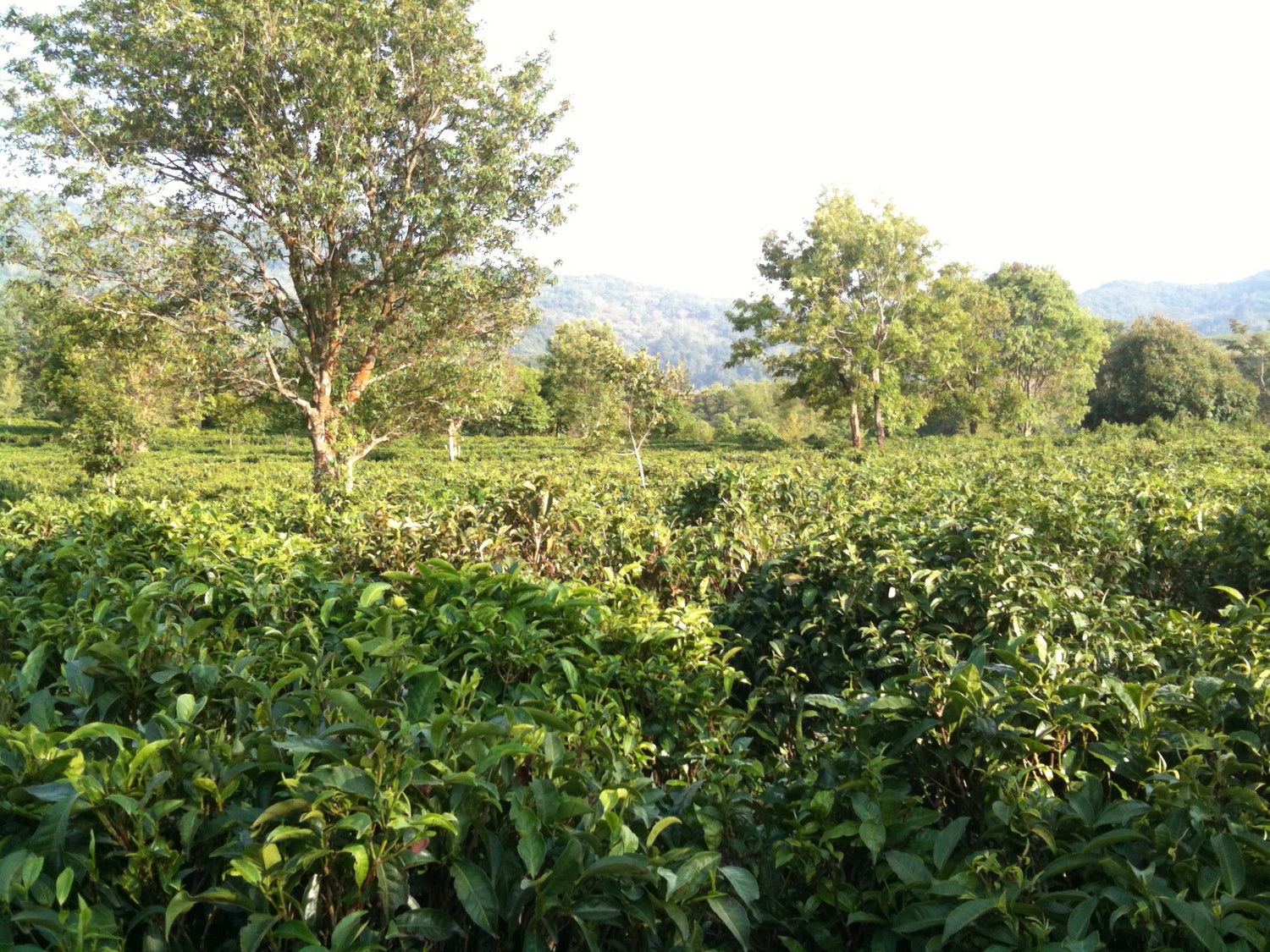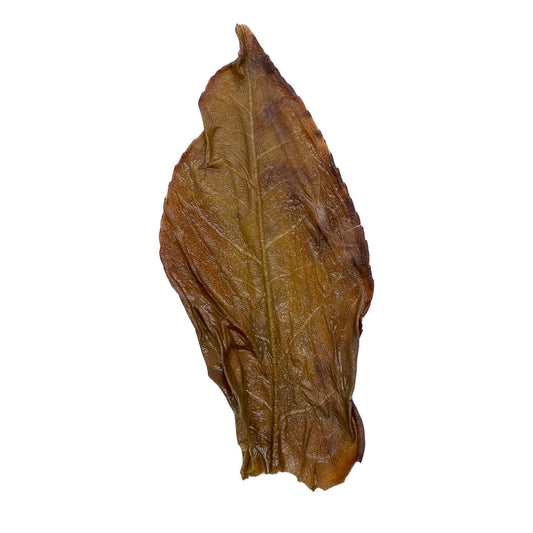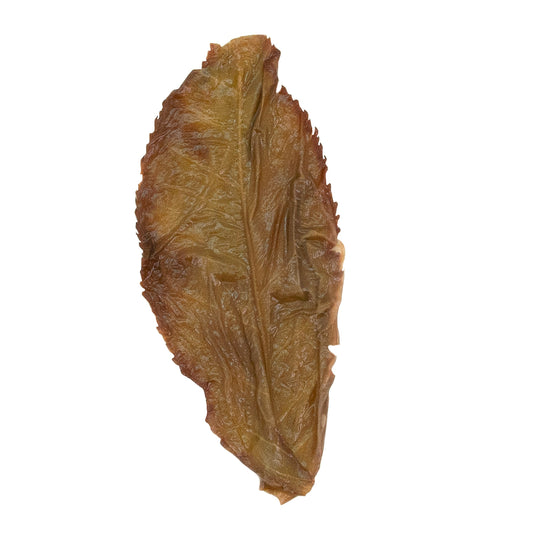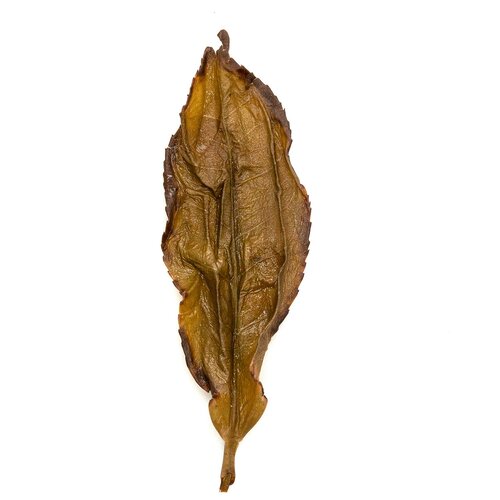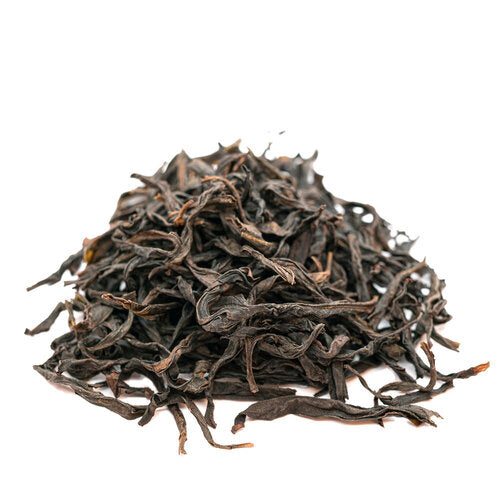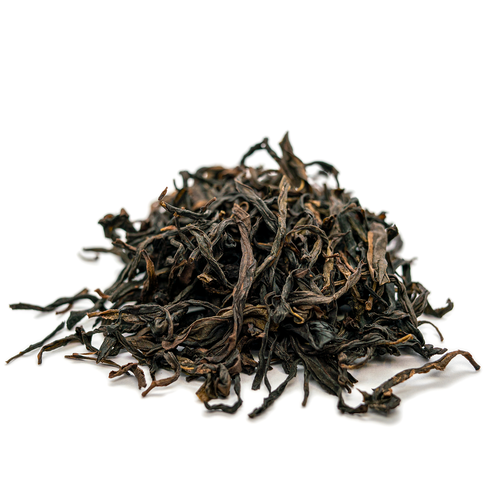History of Wu Long and the She People
It isn't easy to talk about Wu Long (Oolong) (and not just Feng Huang Wu Long) without talking about the She people. Often stereotyped as dog worshippers by other Chinese, the She people's mythical beginnings are traced back to a brave dragon-turned-dog-turned-dog-headed human ancestor, who had four children with a princess, beginning the She tribe. Pan Hu, the dog-head ancestor, died by tripping on a vine that his brother, Black Dragon, aka Wu Long, had transformed into. Afterward, filled with regret, Wu Long transformed again into a tea tree to provide for his brother's offspring until the end of time. This ancestry lore is essential, not only because it depicts the beginning of Wu Long (a tea tree, not a tea category), but also because She people supposedly originated from Feng Huang Shan (Phoenix Mountain), marking Feng Huang as the birthplace of Wu Long.
Later, due to war and other reasons, the She people migrated many times north to Fu Jian, Zhe Jiang, and An Hui Provinces, spreading Wu Long (Oolong) and tea culture along the way. Of course, this is just one of the many origin stories about tea, but it is a familiar story for Wu Long's origin (Oolong). Nowadays, Wu Long (Oolong) is indeed both a tea category based on the processing method and the name of specific varietals of tea trees. There are approximately 260 She people who live in Feng Huang, mainly in the village of Shi Gu Ping.
Another story in Feng Huang Shan about a phoenix bird carrying tea in its mouth to feed the unfortunate 7-year-old last emperor of the Song Dynasty hiding from Mongolian soldiers. The major tourist attractions in Wu Dong pay tribute to this story, and many varietals of Feng Huang Wu Long are referred to as (roughly translated) "bird beak." The oldest tea tree in Feng Huang Shan, estimated to be 700 years old, was also rumored to be a descendant of the original Song Dynasty bird beak tea, therefore named Song Zhong.

Feng Huang Wu Long Geography
Feng Huang Wu Long is the pinnacle of a subcategory of Wu Long (Oolong) called Rao Ping Wu Long — Rao Ping because it is the district Phoenix Mountain used to belong to. It is important to clarify this change of jurisdiction because Rao Ping (without Feng Huang Shan) is considered one of the largest peripheral Wu Long regions, often viewed as the central hub for knock-off Feng Huang Wu Long. Feng Huang is a township situated in Feng Huang Shan.
Wu Dong Village
There are 19 villages in the township, with Wu Dong (which refers to both the village and the mountain peak) being the most renowned location for tea. Though at an impressive 1391m, Wu Dong Mountain is not the highest peak within Feng Huang Shan. It is, however, considered to be the best location for tea. Feng Huang is a rare instance of an area outside of Yun Nan with many ancient tea trees. An early 1980s survey showed that there were over 3700 tea trees over 200 years in Feng Huang. However, there has been a rapid decline of the old trees since the 1990s, putting the current number much lower. An ancient tree of any specific varietal is highly prized. The most desired Feng Huang Wu Long either comes from Wu Dong or a village known to have old/originals of a particular varietal. For example, after Wu Dong Shan, Mi Lan Xiang trees from Bai Shui Hu village are more sought after than any other location because Bai Shui Hu has the oldest trees of this varietal.
Varietals, Naming, and Grading
Dan Cong
Feng Huang (Phoenix) Wu Long is often referred to as Feng Huang Dan Cong, meaning "single bush." The name is technically misused in most cases because it relates to a specific grade of Feng Huang Wu Long. It traces its history back to the communal farming era, where the teas were harvested and centrally produced, then blended and graded. Dan Cong was the highest grade harvested from massive trees (which means they are old) that have been individually picked, then individually processed, then blended. Dan Cong is what made Feng Huang Wu Long famous. Therefore the name became very well known. However, most "Dan Cong" nowadays are not technically Dan Cong. This unique processing method has nearly been abandoned now that the tea trees and activities have become privatized. The common practice nowadays is the following: the teas from giant trees are processed into Dan Zhu (single tree), which means that the entire batch comes from a single tree, and they are never blended; other teas, either big old trees or young trees, are picked and blended before processing, which gives us single varietals, but not Dan Cong. However, the name has quickly become so commonly used in the market as synonymous to Feng Huang Wu Long that any tea that resembles the style is usually referred to as Dan Cong.
Lang Cai
Lang Cai was the second grade of Feng Huang Wu Long during the communal farming era, where the picked teas were mixed from various trees and then made by handshaking the teas. While still available, it is not common to find Lang Cai anymore.
Shui Xian
Shui Xian is the collective name of the old varieties of Feng Huang Wu Long. It used to be the default name for un-shaken Feng Huang Wu Long, resulting in the lowest grade. However, nowadays, it simply refers to Feng Huang Wu Long made with original varieties instead of a single varietal. Shui Xian is weighty and bold but soft on its landing with sizzling sweetness.
Single Dan Cong Varietals

The 10 Signature Fragrances of Dan Cong
Due to the complexity of Feng Huang varietals and the frustrating breath of characteristics the tea can have (not to mention the inherent uncertainty that comes with handmade teas), efforts were made to standardize the names of the teas solely based on their signature notes. This practice gave birth to the 10 Signature Fragrances of Dan Cong. However, since not everyone is on board with this naming method, and the aroma often overlaps with varietal names, the debut of these naming conventions complicated the confusing Dan Cong nomenclature even more. In general, teas named after the fragrance are considered less desirable than the ones named after varietals.
Note that some names look the same, they are not synonymous with varietal names. See the confusion?
- Huang Zhi Xiang
- Zhi Lan Xiang
- Mi Lan Xiang (Honey Orchid)
- Gui Hua Xiang
- Yu Lan Xiang
- Xing Ren Xiang (Almond)
- Ye Lai Xiang
- Jiang Hua Xiang (Ginger Flower)
- Mo Li Xiang (Jasmine)
- Rou Gui Xiang (Cinnamon)
How Feng Huang Dan Cong is Made and Processed
-

1. Picking
Wu Long (Oolong) uses leaves only, no buds. Out of all Wu Long (Oolong) categories, Dan Cong picks the youngest leaves when the bud has just fully opened up or become frontal, called Xiao Kai Mian (small opening).
-

2. Wilting
The freshly picked leaves need to be sun wilted first. The time required of this step varies depending on the weather, generally ranging from 15 minutes to 2-3 hours. Once the leaves are silky and soft, they are moved inside to continue to wilt under shade and gently flipped occasionally.
-
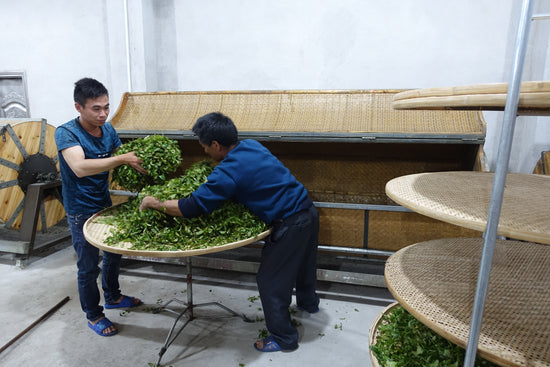
3. Shaking/Tumbling
This is the signature step to making Wu Long (Oolong), where the tea maker shows their skill by regulating how the water travels from the stems to the leaves and out. It is traditionally done by shaking the leaves on a bamboo tray but is now commonly done with a tumbling machine. This step varies by tea and by the weather; it takes a thoroughly experienced tea maker to decide how soon and often to shake the tea. Usually, it's every 1-1.5 hours and repeats around 3-5 times. This step is also time-consuming running until the early morning (3:00AM).
-
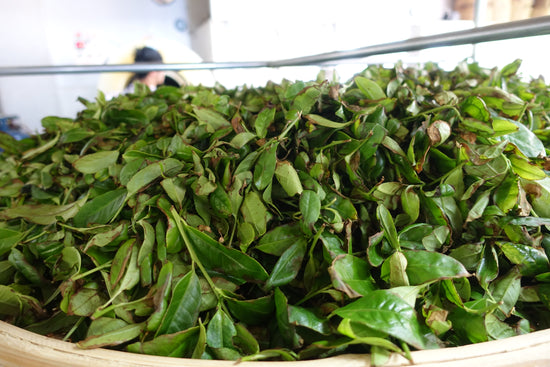
4. Kill Green
After the tea has rested for a few hours to ferment, the leaves are then transferred to a firing wok or machine to have all the residual enzymes killed. This step usually happens early in the morning, around 7:00 AM.
-
5. Rolling and Baking
The hot teas are then transferred to a rolling machine to be rolled into string shapes and spread evenly onto baking trays to be baked dry.
-
6. Picking and Roasting
After the tea season, the refining process of tea making starts with the tedious step of picking out old stems and leaves, usually taking months to finish. Then the “cleaned” teas are charcoal roasted over a very dim ash fire for 6-10 hours. Many teas need to repeat this step, with at least three weeks' resting time in between each roasting.

